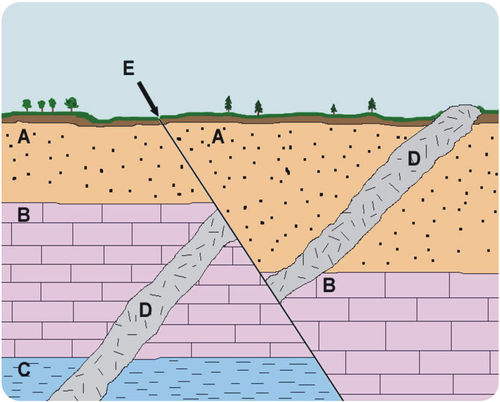The weather conditions in an
area over a period of time
Climate
When a rock layer erodes and
causes a break in the geologic
record
Uncomformity
The study of Earth and it’s
processes
Geology
Stating wether an object is
younger or older based on the
objects or events its around
Relative Dating
What is currently happing with
Earth’s process can be used to
explain events in the past.
Uniformitarianism
The lithosphere is made up of
large plates that are always
moving
Continental Drift
The thinking that geologic
changes happen suddenly
Catastrophism
The older layers of sedimentary
rock are on the bottom and the
younger layers are on the top
The Law of Superposition
The single land mass that was
once composed of all the
continents
Pangea
Name 2 ways organisms can
become fossils.
Frozen
Petrification
Amber
Asphalt
Buried in Sediment
T or F
The addition of oxygen in our
atmosphere made it possible for
life to exist on Earth
True
T or F
If there are more plants on Earth,
there will be less erosion
True
If I find a fossil of a fish, what
can I assume about the rock
the fossil was found in?
The rock was once an ancient ocean.
When did dinosaurs become
extinct?
End of Mesozoic Era
Name 2 Eras in Earth’s History
Paleozoic
Mesozoic
Cenozoic
How does sedimentary rock
usually form?
Horizontally
When did the solar system
form?
4.6 Billion Years Ago
When looking to see how climate
has changed over time scientists
can use 2 methods, name one
Ice Cores
Tree Rings
Sea Floor Sediments
Which is the youngest layer
E
What is one of the most
common ways Earth’s surface
changes shape?
Erosion and Weathering
Index Fossil, Trace Fossil, or Fossil
-Organisms walks through soft sediment
which eventually hardens and gets
burried
Trace fossil
Index Fossil, Trace Fossil, or Fossil
-Coprolite from animals
Trace Fossil
Index Fossil, Trace Fossil, or Fossil
-Remains of an organism found in amber
Fossil
Index Fossil, Trace Fossil, or Fossil
-Existed for a small amount of time
on Earth
Index Fossil
A rock contains a radioactive isotpe that
has a half life of 2,000 years. 25% of the
parent isotope remains in the sample.
How old is the sample?
4,000 years old!
Label!
